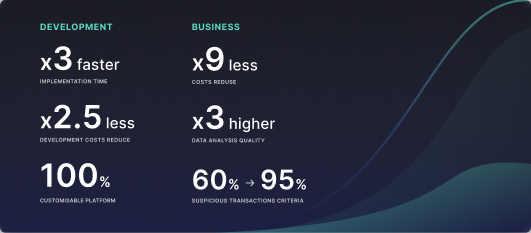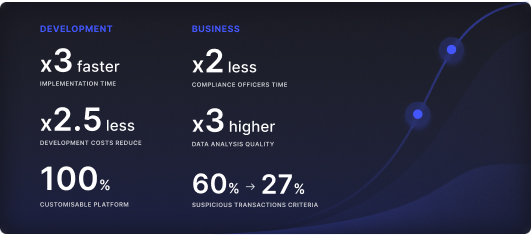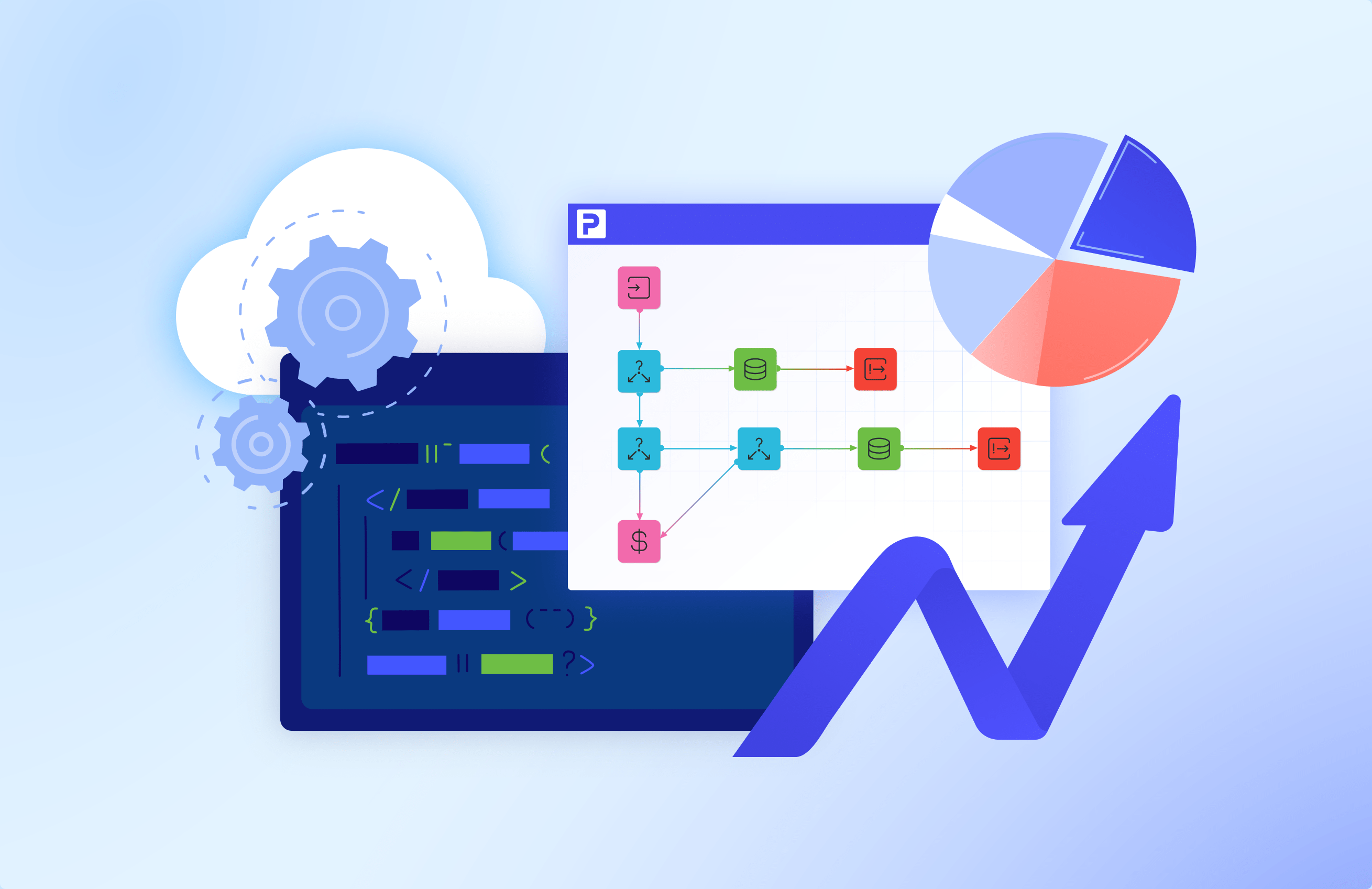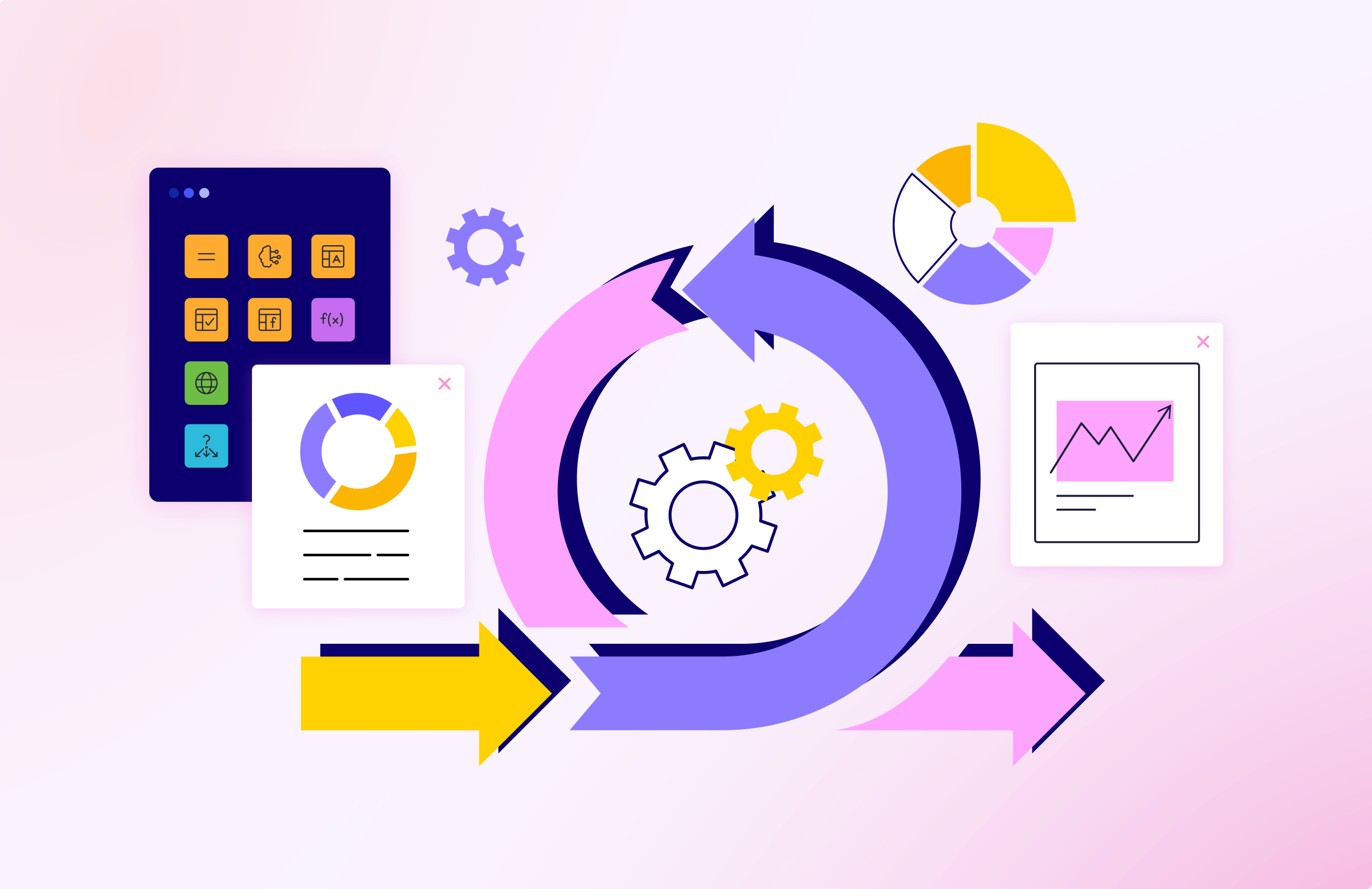Workflow Orchestration: Introduction, Types, Tools


Modern software agencies deal with lots of data. Their processes are growing more complex as technology advances. Thus, the need for effective workflow orchestration is increasing day by day. It’s hard to handle all tasks and organize transitions between tasks manually. The good news is that you don’t even have to, as a huge set of orchestration systems and platforms has emerged to address this challenge for you.
So, how can your company benefit from orchestrated software and what is the data orchestration meaning? This article dives deep into the automation orchestration concept to give you a practical understanding of this change to your business processes.
Introduction to Workflow Orchestration
Let’s start from the basics, defining the key concepts we use in this article.
What Is Workflow?
A workflow is any set of sequences or task steps that need to be unified by data flows between them. A well-formulated workflow informs the user what work should be done at every step, what its expected outcome is, and what further step this step’s results should inform. The data from one completed step should transition to the next stage to ensure coherence between these steps, which makes it a data workflow.
What Is Orchestration?
Orchestration of workflows presupposes the coordination, or configuration, of apps and services involved in a specific workflow or a set of workflows. Thus, data orchestration helps companies manage separate systems, services, and apps within their IT infrastructure and unify them into coherently working bundles to complete specific tasks.

What Are Its Various Types?
Orchestration workflow may take several forms depending on your task and business structure. Here are the three most popular ways to orchestrate data you should consider.
Cloud
Most companies utilize cloud resources for their operations today. Using cloud orchestration technologies, you can unify and automate the operations of workloads on private and public clouds. This way, a variety of cloud-based services and data held on cloud servers are combined into coherent, automated workflows to ensure smooth business operations.
Service
Service orchestration programming allows companies to access ready-made service solutions in the cloud. It provides complete functionality for designing, developing, and operating new apps. This way, orchestrated services cover the operational and functional aspects of the app lifecycle from origination to deployment and maintenance.
Release
Effective release orchestration ensures that your software deployments run smoothly across various environments and ensures complex release coordination without significant errors. You can easily manage and facilitate the application releases to enjoy full control over the development pipeline, environment management, and automated deployment processes. Companies integrating the release orchestration engine are continually updated about the release pipeline’s status.
What Are Its Benefits?

It’s hard to overestimate the value of well-organized software orchestration in a development company because it offers immense potential for automation and multiple, complex task coordination. As a result, companies receive numerous business benefits and enjoy the advantages of smart process arrangements as follows.
Automation
Understanding the value of orchestration for automation presupposes answering the question, “what does orchestrated mean?” In a nutshell, an orchestrated workflow is like a shopping cart where you throw all your orders, each containing a particular set of tasks, and assign the final outcome they should give. This way, a data orchestrator can assign various statuses to the tasks within the categories and between them, stipulating the order of task completion at the same time. Such an arrangement removes the need for human involvement in the workflows and between them, thus helping your company achieve greater process automation no matter the number of workflows in the sequence.
Efficiency
By employing a variety of orchestration softwares, you’re sure to attain greater efficiency at the business and user levels. Successful data orchestration ensures the organization’s agility and takes care of coherent, continuous data center operations, which reflects in better organizational performance.
Communication
Complex tech processes within a software development company require frequent and precise communication to bring different but interconnected processes into coherence and ensure proper workflow running. Organizing this communication with the help of orchestration tools is a great way to enhance the speed and quality of your product deliveries without investing extra resources and effort into your pipeline management.
Cost Savings
What is data orchestration in terms of costs? First, process automation is a great alternative to hiring new costly staff for your agency to manage increasingly complex data flows. Orchestration thus helps meet your growing business needs without additional human resources. Besides, it helps deliver software faster due to the avoidance of human-related delays and real-time error management. As a result, the whole development process becomes cheaper, as low operational costs are associated with higher task execution speed and the replacement of manual processes with more cost-effective automated tools.
Reduction of Errors
Another byproduct of orchestration is process error minimization – another efficiency parameter your organization will improve over time. Using an orchestration tool, you get an intuitive, interactive UI for building end-to-end workflows without the risk of human error. Such arrangements ensure full process visibility and allow advanced control at any workflow point to streamline operations and boost their precision.
Workflow orchestration offers additional risk-minimizing tools: transparent and secure script lifecycle management, self-documenting instruments, audit trails, revision histories, centralized logs, real-time alerts and monitoring statuses, and so much more. Orchestration software also allows full object streamlining between the on-premise and cloud environments, which also eradicates the risks of errors during data transfer.
Simplified Optimization
You can achieve many business goals with the help of orchestration tools – from platform orchestration to server orchestration and much more. Any method of this technology’s use ensures effective integration, automation, and monitoring of multiple tech stacks within a single point of control. This way, you can optimize complex processes with simple, user-friendly drag-and-drop options for advanced workflow sequencing and automation.
Conclusion
So, let’s briefly recap what orchestration automation can give to your business. In most cases, a properly arranged orchestration of data flows and processes ensures that you:
- Pass data between tasks in an automated way without extensive human involvement.
- Assign custom schedules to dev processes.
- Receive timely alerts of errors or bugs.
- Retry your software and ensure it quickly recovers from failures.
- Bypass the expensive and time-consuming caching recomputation.
All these improvements are a path to bringing down the negative engineering in your software pipeline to a minimum and attaining a new edge in process efficiency. Orchestrated workflows work well even if something goes wrong and let you troubleshoot quickly. Thus, investing time and effort into data orchestration is your wise step toward greater business performance and cost savings.
FAQ
What are orchestration tools?
The general definition of data orchestration tools includes any software meant to automate the configuration and coordination of several applications and systems. These tools also help integrate and manage data within coherent, well-organized workflow sequences. Integrating properly selected IT orchestration technology allows your company to automate the entire product lifecycle.
What is the difference between automation and orchestration?

The major difference between orchestration and automation is in the scope of their coverage. Automation involves organizing processes within a single workflow to automate their execution and achieve minimal human engagement. Orchestration, in turn, unifies a sequence of workflows that have already been properly automated into a single chain of activities by configuring the data flow from one finished workflow to the other one. As a result, an orchestrated workflow can contain many stages that have been initially automated to ensure cutting-edge process optimization.
Why is Kubernetes called orchestration?
Kubernetes is a frequently used open-source orchestration platform because it provides container orchestration functionality. Containers can be used in multiple environments, allowing easy application deployment without substantial redesign. Besides, the container orchestration system enables handy microservices for convenient storage, networking, and security organization within the company’s complex IT infrastructure.
 Visual Development
Visual Development Assignment of risk level and customer category within KYC processes during customer onboarding
Assignment of risk level and customer category within KYC processes during customer onboarding Cross-sell offer calculation for a 12MM strong client portfolio
Cross-sell offer calculation for a 12MM strong client portfolio

